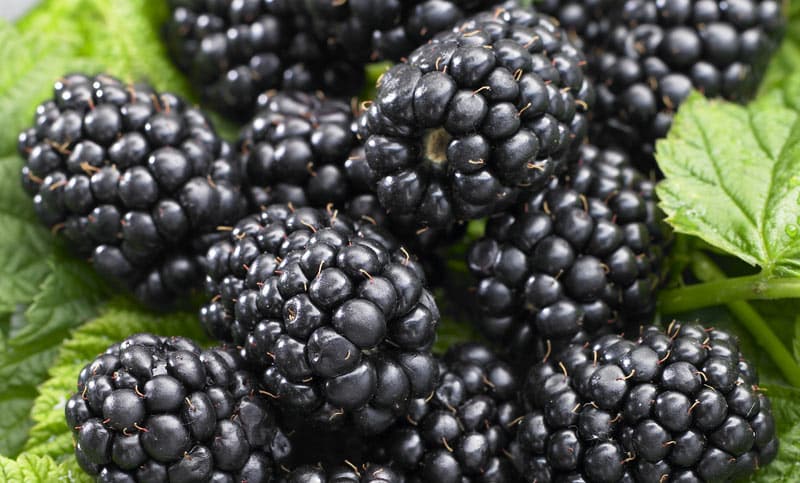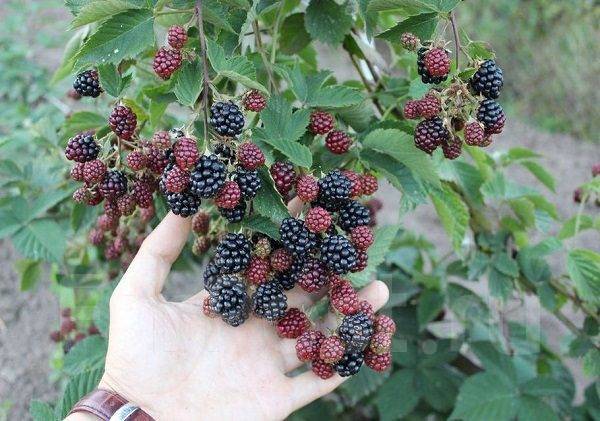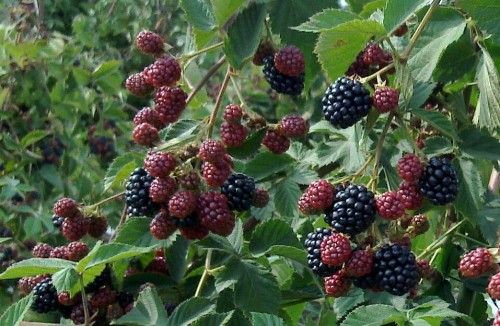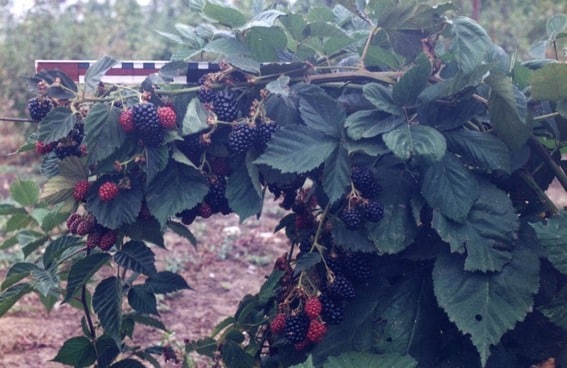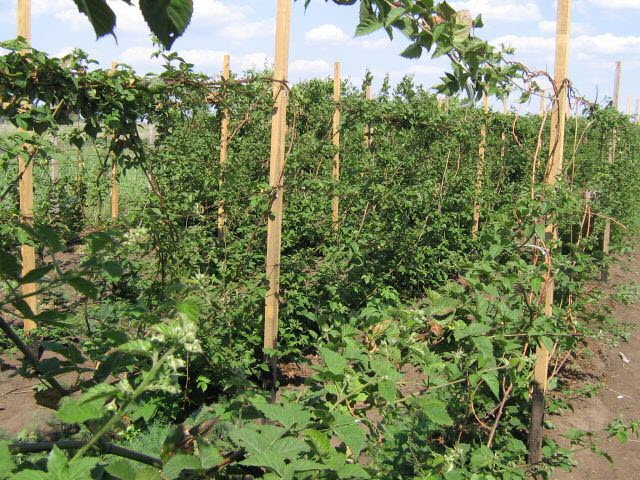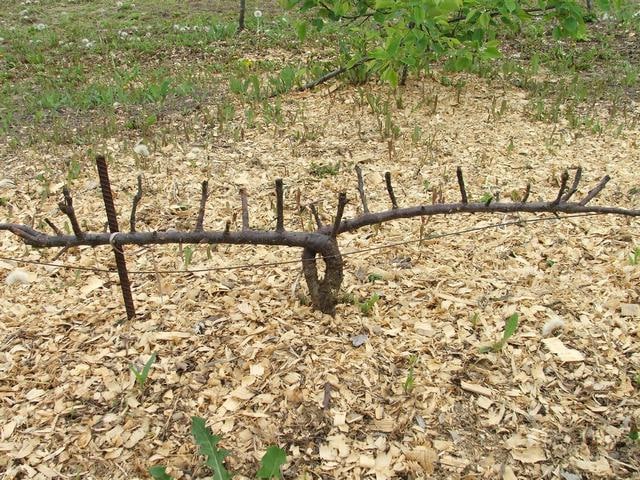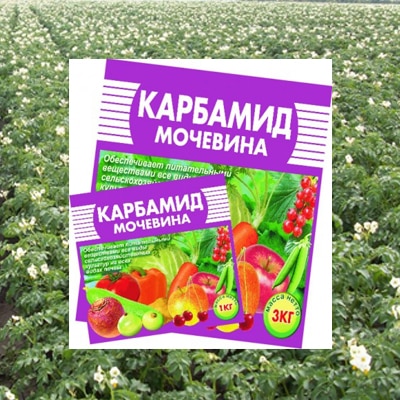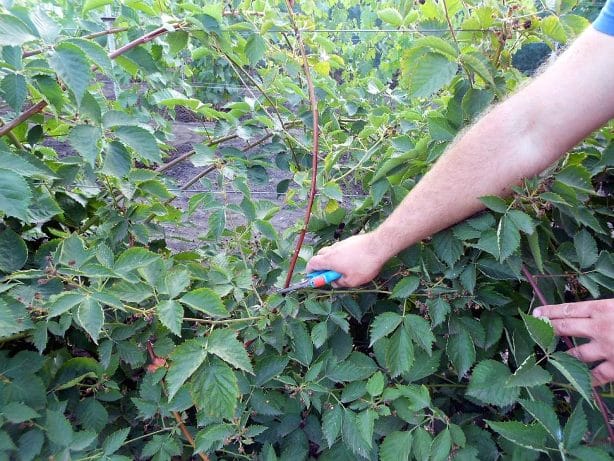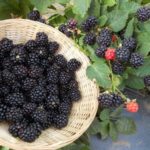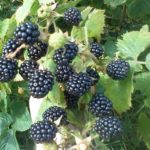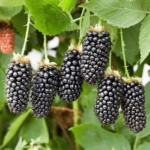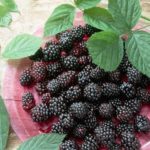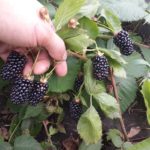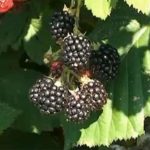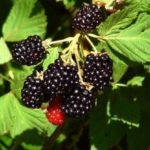Black Satin blackberries are cultivated in Europe and America, the hybrid takes root in mid-latitudes, and the shrub is grown under cover for the winter in the northern regions. For compliance with agricultural technology and good care, the variety rewards with an excellent harvest of berries, which contain a lot of vitamins, organic acids, and natural antioxidants. Black Satin ripens earlier than other known varieties, but fruiting lasts for at least two months. The shrub grows quickly, the height of the shoots approaches 7 meters.
- Blackberry selection Black Satin
- The Culture Advantage
- Description of the variety
- Fruit
- Bush
- Productivity
- Specifications
- In what areas can it be grown?
- Frost resistance
- Susceptibility to insects and diseases
- Reproduction methods
- How to plant blackberries on the plot
- Optimal planting dates
- Preparing soil and seedlings
- Scheme and algorithm of landing
- How to ensure proper plant care
- Fertilizer
- Irrigation and loosening
- Trimming
- Do I need to tie up blackberries?
- Preventative treatment
- Preparing for winter
Blackberry selection Black Satin
Gardeners and farmers owe the creation of many varieties of crops from the Rubus family to the state of Illinois, which nature has blessed with tropical summers, snowy winters, and frequent destructive hurricanes. Black Satin blackberries were bred by specialists from the University of Carbondale. When crossing the well-known varieties Thornfree and Darrow, a productive hybrid with fast-growing smooth shoots was obtained.
The Culture Advantage
Many gardeners liked Black Satin blackberries, since the variety borrowed many advantages from its closest relatives, but it also has disadvantages. The advantages of a hybrid include:
- No thorns.
- High yield.
- Pest resistance.
- Great berry taste.
Blackberry roots do not grow throughout the area, but go deep and withstand prolonged drought. The fruits ripen unevenly, but this can be considered both a disadvantage and an advantage of the variety. They are sweet and aromatic, but they are not stored for a long time, and the berries, which are valued for their abundance of ascorbic acid, can only be transported in an unripe form.
Bushes need to be formed from young branches, since in mature plants they become hard and brittle.
Description of the variety
Long shoots of Black Satin blackberries grow up to one and a half meters, after which they bend towards the ground and spread along it. The thickness of powerful branches of a two-year-old shrub reaches 30 mm.
Fruit
Blackberries are collected in clusters of up to a dozen pieces or more.They have an elongated shape and, when ripe, acquire a glossy shine and black color. The fruits, which are set in the upper part of the stems, weigh about 7 g. The berries are rich in carotene, organic acids, and minerals.
When using them:
- insomnia goes away;
- immunity is strengthened;
- elasticity of blood vessels returns.
The fruits, which begin to ripen in early August, have a sweet taste and pleasant aroma; Black Satin blackberries ripen earlier than the parent varieties.
Bush
Powerful shoots of the hybrid develop and grow very quickly. Trifoliate leaves of emerald color appear on strong branches in spring. Purple buds turn into snow-white inflorescences. The shrub has a decorative appearance; the roots do not spread throughout the area.
Productivity
Blackberry branches produce a lot of berries. If you comply with the requirements of agricultural technology and careful care, you can expect to collect up to 2 buckets of fruit from one bush.
The yield of Black Satin is slightly higher than that of the parent varieties, but the berries must be processed immediately.
Specifications
The hybrid, bred in the USA, quickly attracted the attention of European gardeners due to its lack of thorns, early fruiting, excellent taste, and resistance to major diseases of plants from the Rubus genus.
In what areas can it be grown?
The Black Satin variety is cultivated in the southern regions; the shrub is not afraid of drought and can withstand heat. Blackberries take root and bear fruit in mid-latitudes, growing north of the Moscow region, provided they are insulated for the winter.
Frost resistance
The hybrid can withstand negative temperatures, but when the thermometer drops to -20 C°, the shoots freeze and berries do not form on them. In all regions of Russia, except for the southern regions, both the roots and branches of the bush must be covered for the winter.
Susceptibility to insects and diseases
The Black Satin hybrid was created by crossing varieties that have good immunity to pests, fungi and viruses. Blackberries have inherited resistance to most diseases from them, but in wet weather they are sometimes affected by gray rot. To prevent this problem from occurring:
- The lower branches need to be removed from the ground.
- Remove spoiled berries, cut out infected shoots.
- Before flowering, you need to spray the blackberries with Bordeaux mixture.
Although the shrub attracts bees, it does not suffer from insects. There is no need to treat the foliage with insecticides.
Reproduction methods
The hybrid variety Black Satin can be propagated from the tips of its shoots. In summer, the strongest side branch is tilted to the ground, secured with a bracket, and covered with soil. In the fall, the shoot is separated from the bush and sent to a new place.
How to plant blackberries on the plot
There are certain agricultural technology requirements, subject to which the crop takes root faster, develops better and bears fruit. Planting in open ground is carried out in an area that is illuminated by the sun and is inaccessible to drafts. Blackberries love loose, fertile soil and cannot tolerate stagnant water.
Optimal planting dates
In the southern regions, there is not much difference when to place a young bush in a permanent place - in spring or autumn. In the middle zone, where it gets cold early and frosts often occur in May, it is more reliable to plant Black Satin blackberries in early June.
If necessary, this can be done in September, but immediately cover the bush so that it does not die in winter.
Preparing soil and seedlings
The ground for blackberries in the area is dug up in advance, the remaining roots are pulled out, weeds are removed, and humus and ash are added.If the water comes close to the surface, add a drainage layer, although it is better to find another place. Annual seedlings with three roots no shorter than 15 cm take root well. When purchasing a blackberry bush, you need to pay attention to the bark of the shoots; there should be no cracks or wrinkles on it.
Scheme and algorithm of landing
Since the Black Satin hybrid develops quickly and reaches a height of 5-7 meters, holes are dug from one another at a distance of 2.5 m. The blackberries along with the soil are moved into the ground, leaving the root collar above the surface, watered, compacted the soil and mulched with peat.
How to ensure proper plant care
Black Satin will reward you with a decent harvest if you carefully care for it - feed, moisten, prune, and support the shoots with a trellis.
Fertilizer
When planting a bush, add a bucket of humus, a tablespoon of superphosphate and potassium salt each. Until next year, blackberries do not need any additional substances. In the spring it is fed with urea, in the fall - with mineral fertilizers, which will protect it from frost. Once every 2–3 years, up to 2 buckets of manure are applied under the bush.
Irrigation and loosening
Blackberries are watered every time as soon as the top layer of soil dries. Most of all, the Black Satin variety needs moisture during the formation of the ovary. If there is a shortage of it, small berries ripen, and if there is an excess, the roots rot. After irrigation, the soil is carefully loosened so that it does not become crusty.
Trimming
A hybrid blackberry bush is formed following a certain pattern. In the summer, the tops of annual shoots are pinched at a height of about a meter; in the spring, new branches that appear below 45 cm above the ground are removed; the rest are cut down to 40 cm. In the fall, the growths on which there were fruits are removed.
Do I need to tie up blackberries?
Hybrid Black Satin stretches strongly upward and then begins to creep. In order for the bush to bear fruit well, the shoots are attached to a trellis.
To do this, install a structure made of wood or metal in the form of an arch, annual branches, and no more than 6 of them are left, tied on one side of it, the rest on the other.
Preventative treatment
To prevent blackberries from suffering from gray rot in wet weather, the bushes are sprayed with copper sulfate in early spring, and fruit-bearing shoots are cut down to the ground in the fall.
Preparing for winter
The branches of the plant freeze already at -20 0C. In the southern regions they are tied into a bundle, placed in a circle near the trunk and covered; in mid-latitudes, the shoots are first sprinkled with peat and leaves, then spruce branches are placed and only then insulated with material.

